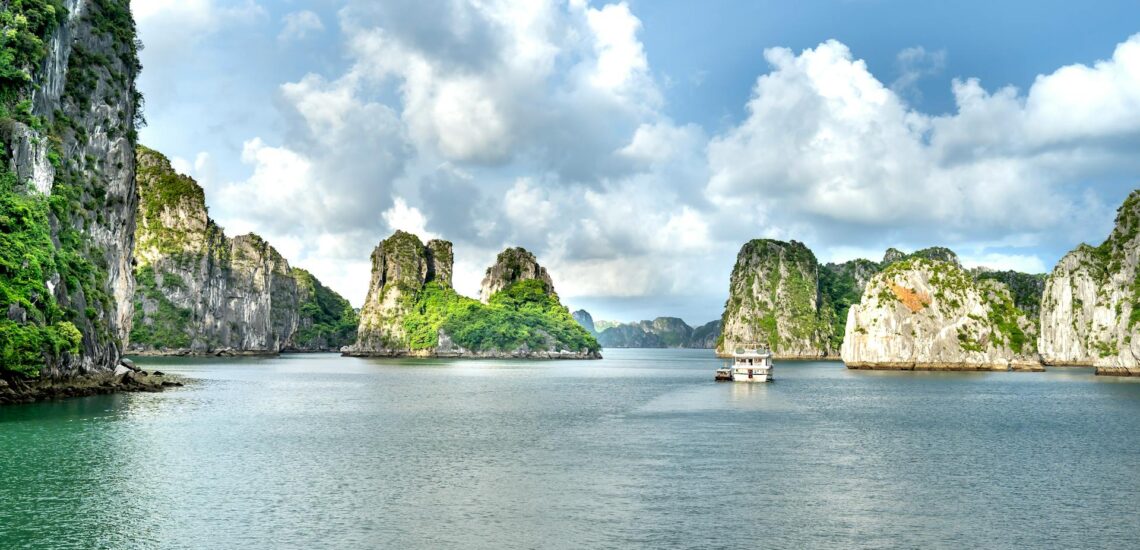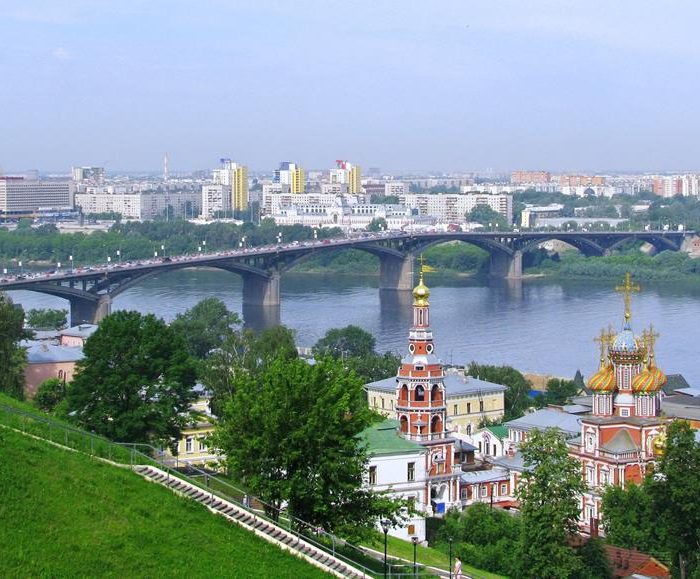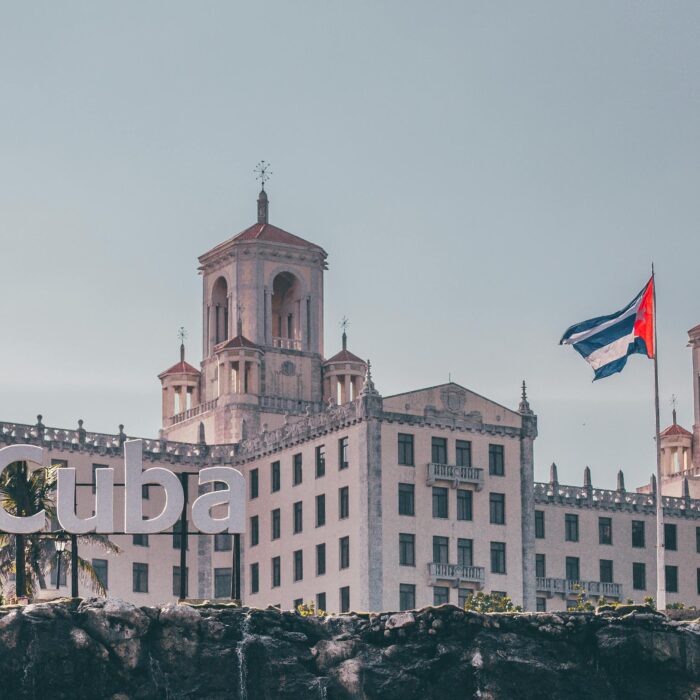Quick facts about Vietnam:
- Population: Approximately 98 million people.
- Capital: Hanoi.
- Largest City: Ho Chi Minh City (formerly Saigon).
- Official Language: Vietnamese.
- Currency: Vietnamese dong.
- Government: Socialist republic.
- Major Religion: Buddhism.
- Geography: Located in Southeast Asia, bordered by China, Laos, Cambodia, and the South China Sea.
Fact 1: Vietnam is a country of rivers
Vietnam, often dubbed the “land of the blue dragon,” boasts a remarkable abundance of rivers, with over 2,360 waterways weaving through its diverse terrain. These rivers play a pivotal role in shaping Vietnam’s geography, culture, and economy, serving as vital arteries that sustain life across the country. From the majestic Red River in the north to the sprawling Mekong River in the south, these watercourses provide essential resources for irrigation, transportation, and hydroelectric power generation.
The fertile delta regions formed by these rivers, such as the iconic Mekong Delta and the bustling Red River Delta, are veritable breadbaskets, supporting extensive agriculture and sustaining millions of livelihoods. Beyond their practical utility, Vietnam’s rivers also hold profound cultural significance, featuring prominently in local folklore, traditions, and rituals. With their picturesque landscapes and tranquil waters, these waterways offer both locals and visitors alike opportunities for leisurely boat cruises, serene fishing expeditions, and immersive eco-tourism experiences.
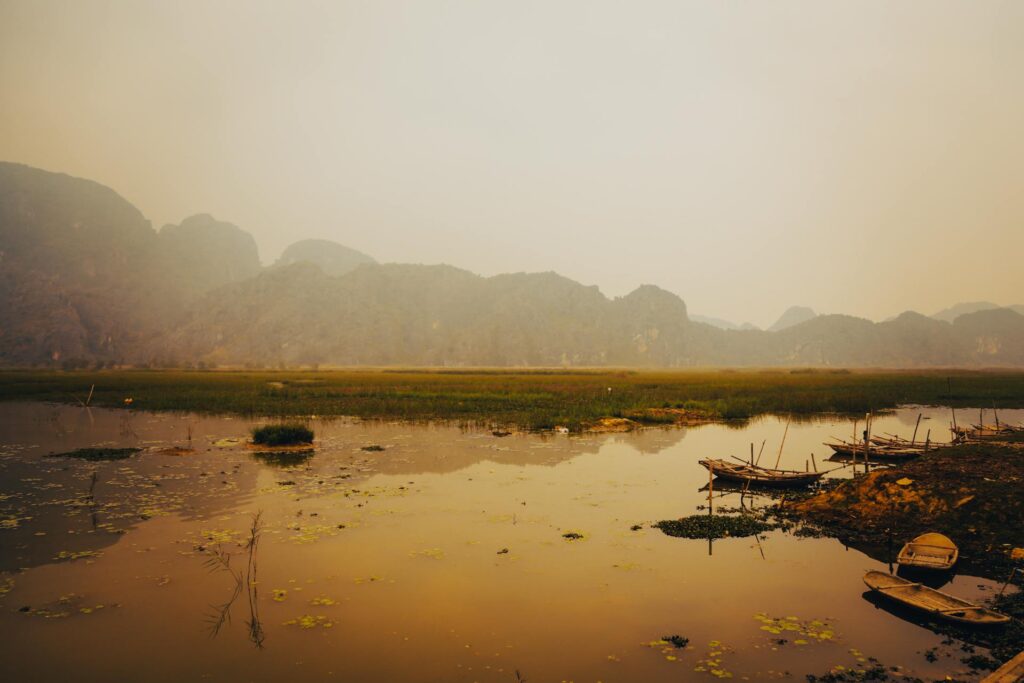
Fact 2: Vietnam is the main exporter of cashew nuts
Vietnam is one of the world’s leading producers and exporters of cashew nuts, with the cashew industry playing a significant role in the country’s agricultural economy. Vietnam’s favorable climate and suitable growing conditions make it well-suited for cashew cultivation, particularly in the southern regions of the country. The Vietnamese cashew industry has experienced rapid growth in recent decades, fueled by increasing global demand for cashew nuts and a focus on value-added processing. Vietnam processes a large portion of the world’s raw cashew nuts, with many processing facilities located in major cashew-producing regions like Binh Phuoc and Dong Nai. The processed cashew products, including kernels, roasted nuts, and cashew-based snacks, are exported to markets around the world, making Vietnam a key player in the global cashew trade.
Fact 3: Vietnam has the largest cave in the world
Vietnam is home to Son Doong Cave, recognized as the largest cave in the world by volume. Located in the Phong Nha-Ke Bang National Park in Quang Binh Province, Son Doong Cave is a natural wonder of immense proportions, with its caverns stretching over 5 kilometers in length, reaching heights of up to 200 meters, and containing its own underground river and ecosystem. Discovered in 1991 and fully explored in 2009, Son Doong Cave continues to captivate explorers and adventure seekers with its breathtaking beauty and unparalleled scale, offering a once-in-a-lifetime experience for those who venture into its depths.
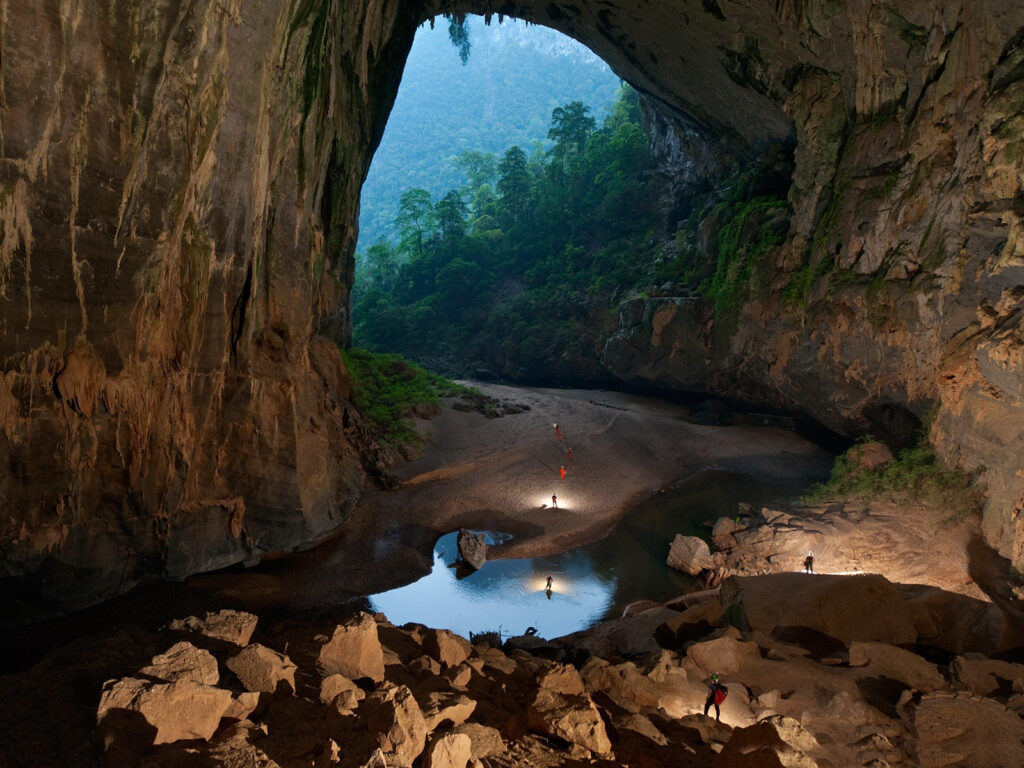
Fact 4: In Vietnam, a network of man-made tunnels has been preserved
Vietnam is home to the Cu Chi Tunnels, an extensive underground network of tunnels that were used by the Viet Cong guerrilla fighters during the Vietnam War. Located near Ho Chi Minh City (formerly Saigon), the Cu Chi Tunnels served as a vital strategic stronghold for the Viet Cong, providing shelter, communication routes, supply lines, and defensive positions against enemy forces.
The Cu Chi Tunnels are a testament to the ingenuity and resilience of the Vietnamese people during wartime. Constructed by hand using simple tools and methods, the tunnels extended for hundreds of kilometers and included living quarters, storage areas, hospitals, command centers, and trapdoors. The tunnel network allowed the Viet Cong to launch surprise attacks on enemy troops, evade detection by aerial surveillance, and maintain their resistance against superior firepower.
Today, the Cu Chi Tunnels have been preserved as a historical site and popular tourist attraction, offering visitors a glimpse into the harsh realities of war and the resourcefulness of the Vietnamese people.
Fact 5: There are a lot of Buddhist temples in Vietnam
Vietnam is home to a vast number of Buddhist temples, reflecting the country’s deep-rooted Buddhist heritage and spiritual traditions. From small neighborhood pagodas to grand temple complexes, Buddhist architecture permeates the Vietnamese landscape, serving as centers of worship, meditation, and community gathering.
These temples vary in size, style, and significance, with some dating back centuries and others built more recently. Many temples are adorned with intricate carvings, colorful decorations, and iconic pagoda roofs, creating serene and sacred spaces for contemplation and prayer.
Throughout Vietnam, Buddhist temples play a central role in daily life, hosting religious ceremonies, cultural festivals, and community events. They serve as spiritual sanctuaries where devotees come to pay their respects to the Buddha, make offerings, and seek guidance from monks and nuns.

Fact 6: The main transportation is motorbikes
Motorbikes are a ubiquitous mode of transportation in Vietnam, particularly in urban areas like Hanoi and Ho Chi Minh City (formerly Saigon). Known colloquially as “xe máy,” motorbikes offer a convenient and efficient means of navigating the bustling streets and narrow alleyways of Vietnamese cities.
Motorbikes are favored by locals and tourists alike for their affordability, maneuverability, and versatility. They provide a flexible and agile way to traverse congested traffic, easily weaving through narrow lanes and crowded intersections. In addition to personal transportation, motorbikes are often used for commercial purposes, serving as delivery vehicles for goods and services.
The prevalence of motorbikes in Vietnam is attributed to several factors, including the country’s dense urban population, limited public transportation infrastructure, and economic accessibility of motorbikes compared to cars.
Note: If you plan to rent a car or motorcycle, check if you need an International Driver’s License in Vietnam to drive.
Fact 7: There are 8 UNESCO World Heritage Sites in Vietnam
These sites are recognized for their cultural, historical, and natural significance, contributing to Vietnam’s rich cultural heritage and attracting visitors from around the world. They include:
- Complex of Hué Monuments: This site comprises a collection of historic buildings, temples, palaces, and fortifications located in Hué, the former capital of Vietnam during the Nguyen Dynasty.
- Ha Long Bay: Known for its emerald waters and towering limestone islands, Ha Long Bay is a breathtaking natural landscape located in the Gulf of Tonkin.
- Hoi An Ancient Town: This well-preserved trading port from the 15th to the 19th century showcases a blend of Vietnamese, Chinese, Japanese, and European architectural influences.
- My Son Sanctuary: Located in central Vietnam, My Son is a complex of Hindu temple ruins dating back to the Champa Kingdom, a testament to Vietnam’s ancient history.
- Phong Nha-Ke Bang National Park: Home to stunning karst landscapes, ancient caves, and rich biodiversity, this national park is a paradise for nature lovers and adventure seekers.
- Thang Long Imperial Citadel: Situated in Hanoi, this ancient citadel served as the political and cultural center of Vietnam for over a thousand years.
- Citadel of the Ho Dynasty: Constructed in the 14th century, this fortress complex in Thanh Hoa Province is an exceptional example of Vietnamese medieval architecture.
- Trang An Landscape Complex: This scenic area in Ninh Binh Province features limestone karst formations, caves, and cultural sites, offering visitors a unique blend of natural beauty and cultural heritage.
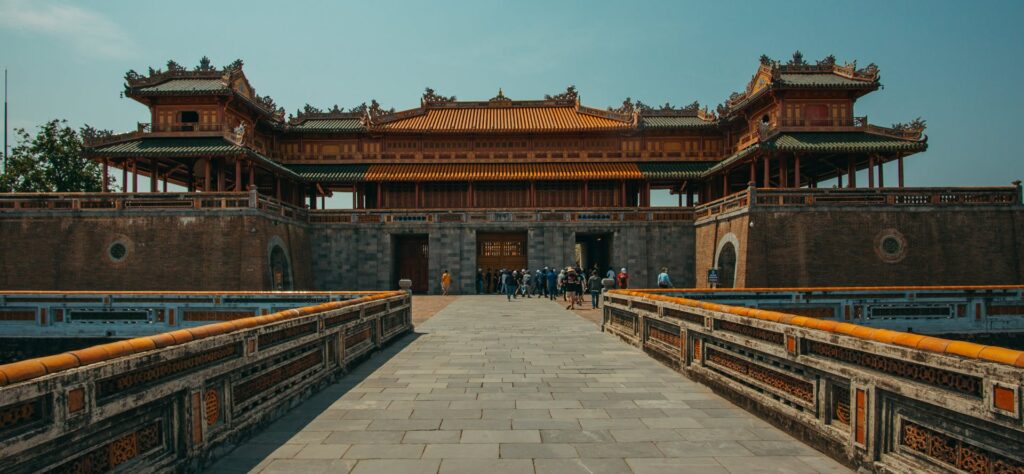
Fact 8: Beer is popular in Vietnam and it is one of the cheapest in the world
Beer is a popular beverage in Vietnam, enjoyed by locals and visitors alike as a refreshing drink to accompany meals, social gatherings, and leisure activities. Vietnam has a vibrant beer culture, with a wide variety of domestic and international beer brands available across the country.
One notable aspect of beer culture in Vietnam is its affordability. Compared to many other countries, beer prices in Vietnam are relatively low, making it one of the cheapest places in the world to enjoy a cold brew. Whether purchased from street vendors, local eateries, or bars, beer is often priced affordably, making it accessible to people from all walks of life.
Fact 9: There are stunning locations with many islands in Vienam
Vietnam is home to numerous stunning locations characterized by picturesque landscapes dotted with islands. These islands, scattered along Vietnam’s extensive coastline and within its mesmerizing bays, offer breathtaking natural beauty and diverse ecosystems. Here are a few notable locations with many islands in Vietnam:
- Ha Long Bay: Arguably Vietnam’s most famous and iconic destination, Ha Long Bay is renowned for its emerald waters and thousands of towering limestone islands topped with lush vegetation. Designated as a UNESCO World Heritage Site, Ha Long Bay’s otherworldly beauty attracts millions of visitors each year.
- Cat Ba Archipelago: Located within Ha Long Bay, Cat Ba is the largest island in the area and serves as a gateway to the surrounding archipelago. With its rugged coastline, hidden coves, and dense forests, Cat Ba offers opportunities for trekking, kayaking, and beach hopping.
- Con Dao Islands: Situated off the southern coast of Vietnam, the Con Dao Islands are known for their pristine beaches, crystal-clear waters, and rich marine life. The archipelago is a popular destination for snorkeling, diving, and wildlife watching, with several protected marine parks and conservation areas.
- Phu Quoc Island: Vietnam’s largest island, Phu Quoc, lies in the Gulf of Thailand and boasts idyllic beaches, lush forests, and vibrant coral reefs. With its laid-back atmosphere and luxurious resorts, Phu Quoc is a top choice for relaxation and water-based activities such as swimming, snorkeling, and sailing.
- Cham Islands: Located off the coast of Hoi An in central Vietnam, the Cham Islands are renowned for their pristine beaches, clear waters, and vibrant coral reefs. Designated as a UNESCO Biosphere Reserve, the islands offer opportunities for snorkeling, diving, and exploring their rich cultural and ecological heritage.
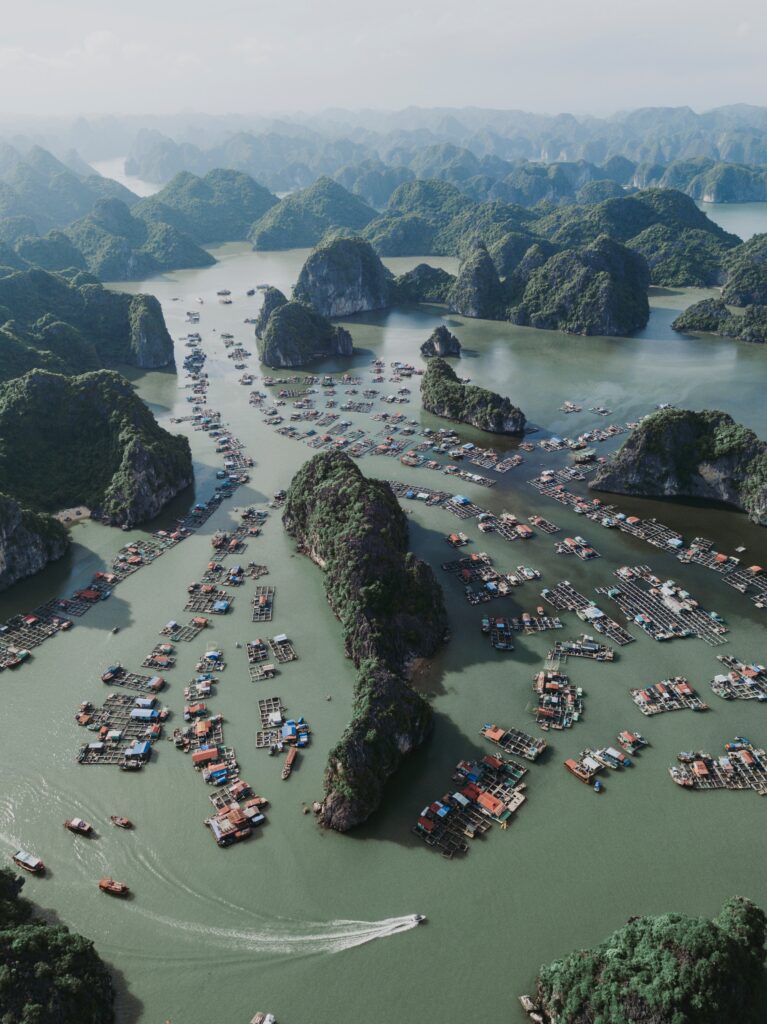
Fact 10: Vietnam has amazing biodiversity
Vietnam boasts incredible biodiversity, thanks to its diverse range of ecosystems, climates, and geographical features. From lush rainforests to coastal mangroves, Vietnam is home to a remarkable variety of plant and animal species, many of which are endemic to the region. Here are some key highlights of Vietnam’s amazing biodiversity:
- Tropical Rainforests: Vietnam’s tropical rainforests, particularly in regions like the Central Highlands and the northwestern provinces, harbor a wealth of biodiversity. These forests are home to a myriad of plant species, including rare orchids, towering hardwood trees, and unique medicinal plants.
- Mangrove Forests: Along Vietnam’s extensive coastline, mangrove forests thrive in the brackish waters of river deltas and estuaries. These vital ecosystems provide crucial habitat for numerous marine species, including fish, crabs, and shrimp, while also serving as a buffer against coastal erosion and storm surges.
- Coral Reefs: Vietnam’s coastal waters are dotted with vibrant coral reefs, particularly in areas like the Con Dao Islands and Nha Trang Bay. These coral reefs support a dazzling array of marine life, including colorful fish, sea turtles, and invertebrates, making them popular destinations for snorkeling and scuba diving enthusiasts.
- Endangered Species: Vietnam is home to several endangered and critically endangered species, such as the Indochinese tiger, Asian elephant, and Javan rhinoceros. Conservation efforts are underway to protect these iconic species and their habitats from threats such as habitat loss, poaching, and illegal wildlife trade.
- Mekong Delta: The Mekong Delta in southern Vietnam is a biodiverse region characterized by a complex network of rivers, wetlands, and floodplains. This fertile landscape supports a rich variety of aquatic and terrestrial species, including migratory birds, freshwater fish, and diverse plant communities.

Published March 24, 2024 • 10m to read

